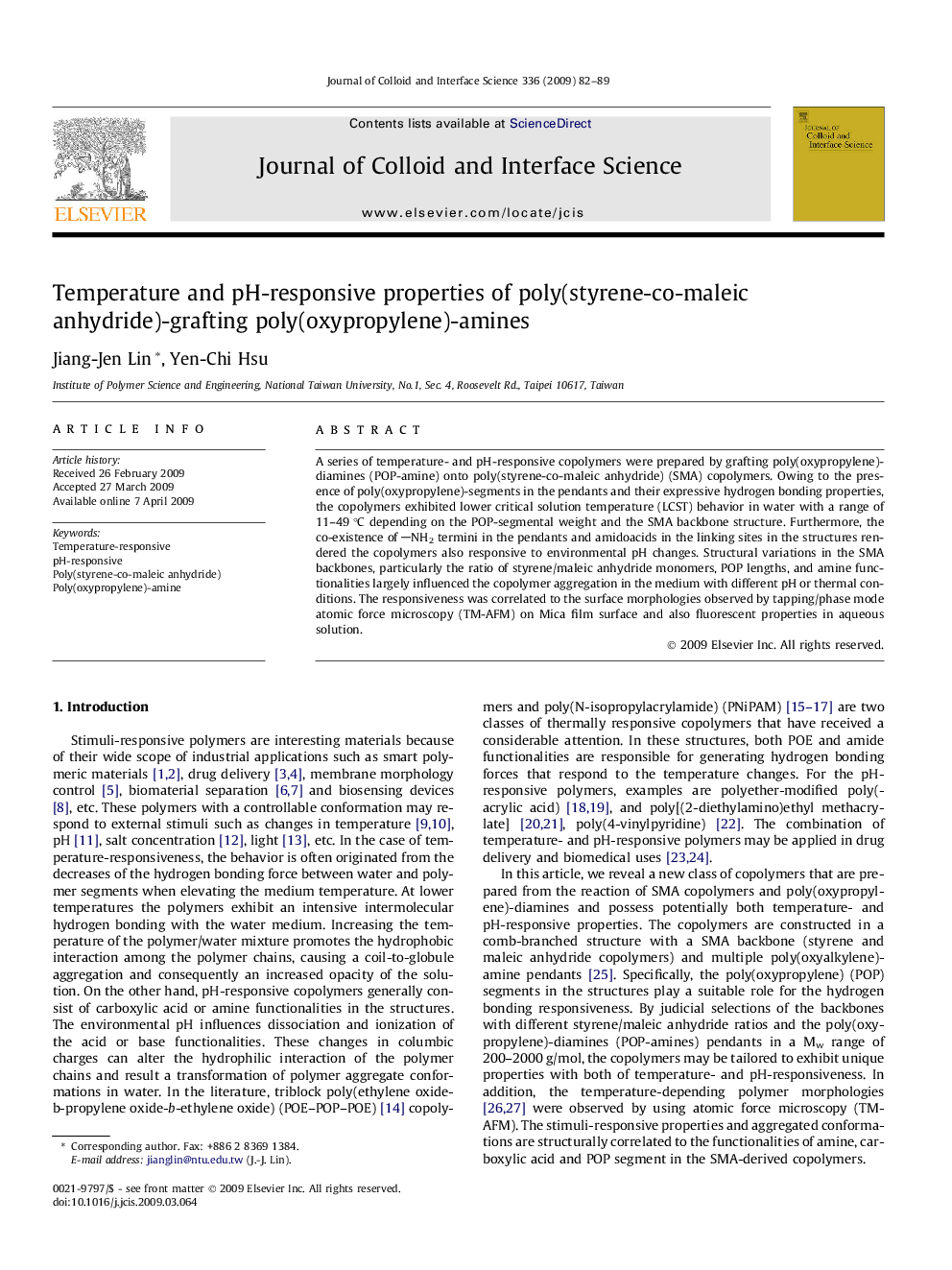| Article ID | Journal | Published Year | Pages | File Type |
|---|---|---|---|---|
| 610342 | Journal of Colloid and Interface Science | 2009 | 8 Pages |
A series of temperature- and pH-responsive copolymers were prepared by grafting poly(oxypropylene)-diamines (POP-amine) onto poly(styrene-co-maleic anhydride) (SMA) copolymers. Owing to the presence of poly(oxypropylene)-segments in the pendants and their expressive hydrogen bonding properties, the copolymers exhibited lower critical solution temperature (LCST) behavior in water with a range of 11–49 °C depending on the POP-segmental weight and the SMA backbone structure. Furthermore, the co-existence of NH2 termini in the pendants and amidoacids in the linking sites in the structures rendered the copolymers also responsive to environmental pH changes. Structural variations in the SMA backbones, particularly the ratio of styrene/maleic anhydride monomers, POP lengths, and amine functionalities largely influenced the copolymer aggregation in the medium with different pH or thermal conditions. The responsiveness was correlated to the surface morphologies observed by tapping/phase mode atomic force microscopy (TM-AFM) on Mica film surface and also fluorescent properties in aqueous solution.
Graphical abstractConceptual illustration of non-covalent bonding interactions and aggregated conformations under AFM of the SMA3000–POP400 comb-branched copolymers.Figure optionsDownload full-size imageDownload as PowerPoint slide
